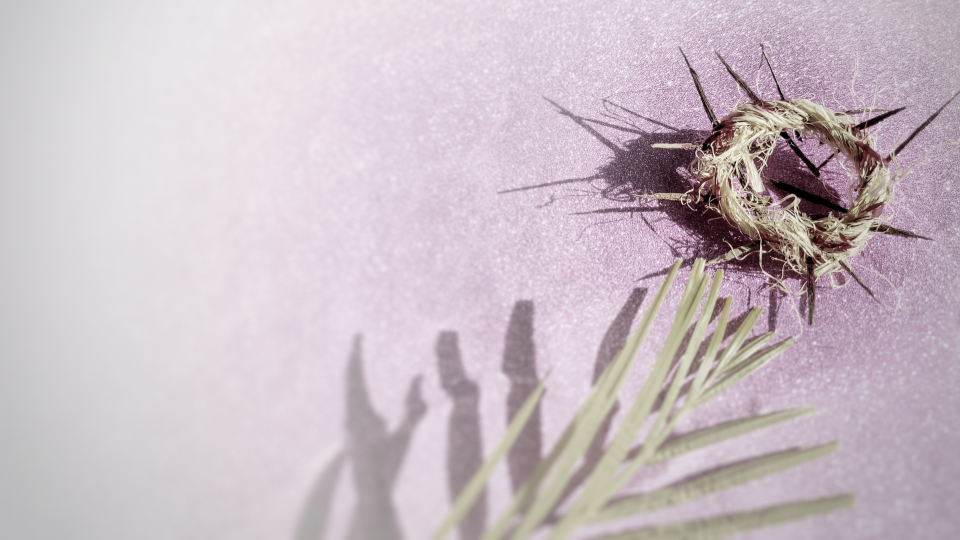The most common challenge to Christian faith is the presence of pain, evil, and suffering in the world. We ask, if there is a God, why are these things allowed? Some suffering is the result of our own folly but there is also the suffering that seems to be woven into the fabric of life in ways we cannot predict or control.
Suffering is a timely topic given that the world has for two years lived under the shadow of a pandemic that has brought so much suffering, pain, and death to our world. Included here is both physical suffering and emotional or psychological suffering. Beyond that, there is the destruction brought on by climate change, fires and floods, economic hardships, and the ravages of war, poverty, and famine. It would seem that suffering is a condition of human existence.
Our cultural narrative wishes to turn a blind eye to suffering—yes it’s there, but let’s not give it attention. We prefer to think about human progress, economic benefit, our own individual freedom, and how technology will save us. We don’t have a place for suffering in our modern narrative. Its presence makes us uncomfortable, even embarrassed. We want it to go away. We can’t make sense of it.
Some in the church have adopted the spirit of the cultural narrative when they assume that faith will deliver them from suffering. This is a false expectation and it is not what Christianity promises, nor is it the way exemplified by its central figure, Jesus. The story of the Passion of Jesus invites another posture toward suffering. In the broader gospel narrative we learn that death is required for life to flourish. A grain of wheat must die in order to bring forth new growth. If we read the Psalms or consult the apostles, suffering is a common theme.
The presence and persistence of suffering in our lives and in our world prompts the question of whether God cares about this human condition. We are inclined to think that if God cared about our pain God would keep us pain free. We see it as a problem to be fixed—and fixed right away. In the larger picture of the Christian faith Divine care has a different look.
The fractured relationship between humanity and God and the pain and suffering that plagues our world as a result, has a long term solution not a quick fix. God’s response to human suffering involved coming into the world and participating in what we all experience. The Apostle Paul expresses this story in a poetic way when he writes;
“…who, though he was in the form of God,
did not regard equality with God
as something to be exploited,
but emptied himself,
taking the form of a servant,
being born in human likeness.
And being found in human form,
he humbled himself
and became obedient to the point of death—
even death on a cross. (Philippians 2: 6-8)
Care about human suffering is manifest in the Divine gesture of taking on the form of a servant—being born in human likeness and obediently walking a path toward death, even death on a cross.
Hope in a world of suffering
Once we let go of the idea of a “quick fix” for our suffering we can set our sights on another horizon.
In the liturgy and services of the early church, crucifixion and resurrection were in close relationship. Sometimes referred to as an “indivisible mystery” crucifixion and resurrection are intimately connected. The suffering of crucifixion and the hope found in resurrection stand side by side. This is instructive for us all as to how we are to respond to our dark and difficult world and to the pain and suffering that is all around us and within us. We acknowledge its presence but we deny its victory. It is not the last word about how things are. The resurrection of Jesus is the first glimpse we have concerning the promise that one day “all things will be made new.” In the light of this story we are able to set our sights on another horizon confident that humanity—that now needs to face its darkness and pain, its struggle and conflict—will one day be free from all that, and even the creation, now groaning and travailing waiting for the day of redemption, will be made new. The challenge before us now is to embody hope and live out glimpses of that newness through gestures of compassion and care, love and justice, forgiveness and healing.
*******
The Crossings project—scheduled for Lent of 2022 and initiated by IMAGO—is an opportunity to bring the Passion narrative to a wide audience through the medium of the visual arts. Focused on the Scriptural Stations of the Cross these works in this all-outdoor exhibition invite the viewer to consider afresh the meaning of that narrative. Betrayal, misuse of power, violence, injustice, vulnerability, and suffering are present in this story. Yet in the great irony that attends the gospel, dark human practices become the pathway to redemption and are elements in a story undergirded by love and characterized by hope. crossingstoronto.com





